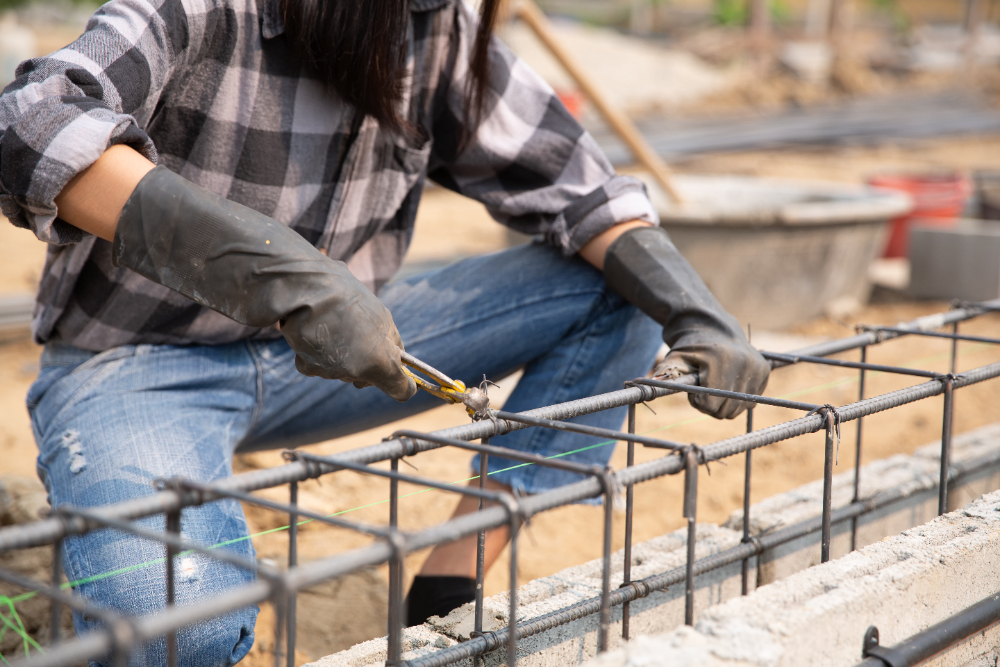They say your buildings are only as good as your foundation, and that makes sense. The building’s foundation quietly makes sure that your structure is stable and would last long. Therefore, a solid concrete foundation is crucial.
Pouring a concrete slab for your metal garage is a critical step in ensuring your structure is stable, durable, and ready for long-term use. Whether you are using your garage for vehicle storage, a workshop, or additional workspace, the foundation plays a vital role in its overall integrity.
Here’s a detailed guide to help you plan and execute this project successfully.
Planning and Preparation
Why a Concrete Slab is Essential
A concrete slab serves as the backbone of your metal garage, offering a durable, level surface that supports the structure and everything inside it. Without a solid foundation, your garage may shift or settle over time, leading to structural damage and compromised usability. Concrete slabs prevent these issues by providing a stable base that distributes weight evenly and resists ground movement. This stability is especially important for garages, which often house heavy vehicles, tools, and equipment. Additionally, the impermeable nature of concrete helps keep moisture from seeping into the garage, protecting your belongings from rust, mold, and other moisture-related issues.
Beyond its functional benefits, a concrete slab also ensures your metal garage can withstand challenging environmental factors. From strong winds to heavy snowfall, a well-poured slab anchors your garage securely, minimizing the risk of damage during severe weather events. Investing time, effort, and resources into creating a properly poured concrete slab is essential to extending the lifespan of your metal garage and preserving its structural integrity. A high-quality foundation not only enhances the garage’s performance but also adds value to your property, making it a worthwhile investment for any homeowner.
Assessing the Site
The first step in preparing for your metal garage is selecting the ideal location. Look for a flat, well-drained area that minimizes the need for extensive leveling and reduces the risk of water pooling around the structure. A properly chosen site can save you significant time and effort during the construction process while also ensuring the long-term stability and functionality of your garage. Consider practical factors like proximity to utilities and ease of access for vehicles. Equally important is compliance with local zoning laws and building codes, which may impose restrictions on the size, setbacks, or placement of your structure. Researching these requirements beforehand will help you avoid costly delays or modifications later.
Once you have identified a suitable location, it is time to mark out the area where the concrete slab will be poured. Use stakes and string to clearly outline the slab’s boundaries, ensuring accuracy in both size and alignment. This step is critical for creating a foundation that properly supports your metal garage. Take measurements carefully and double-check the layout to confirm it matches your design plans. If the ground requires grading or additional preparation, address these issues at this stage to create a level, stable base for your project. Thoughtful site assessment and preparation are essential to ensuring the success of your garage build.
Calculating the Size of the Slab
Determining the correct dimensions of your concrete slab is a critical step in building a stable and functional foundation for your metal garage. The slab should be slightly larger than the garage’s footprint to provide additional support and ensure structural integrity. This overhang helps to distribute weight more evenly and prevents water from pooling directly against the base of the garage, which could lead to long-term damage. For instance, if your garage measures 20×30 feet, consider pouring a slab that is 22×32 feet to accommodate the structure and offer a margin for stability. These additional inches can make a significant difference in enhancing the durability and usability of your garage.
Thickness is another crucial factor to consider when calculating the size of your slab. A standard slab thickness of 4 to 6 inches is generally sufficient for most metal garages, offering adequate support for vehicles and equipment. However, if you anticipate storing heavy machinery or vehicles, it’s advisable to reinforce the edges with a thickness of up to 8 inches. Reinforcement techniques, such as using rebar or wire mesh, can further enhance the slab’s ability to withstand heavy loads. Properly calculating the size and thickness of your slab ensures a strong foundation that can handle the demands of your metal garage for years to come.
Gathering Materials and Tools
Materials You’ll Need
- Concrete mix (pre-mixed or custom blend)
- Reinforcement materials (steel rebar or wire mesh)
- Gravel or crushed stone
- Wooden boards for forms
- Plastic sheeting or vapor barrier
Essential Tools
- Shovel and wheelbarrow
- Level and measuring tape
- Stakes and string
- Hammer and nails
- Trowels and screeds
- Concrete mixer or access to ready-mix concrete delivery
Properly organizing your tools and materials before beginning will help streamline the process and reduce delays.
Preparing the Ground
Clearing and Leveling the Site
Begin by removing any grass, plants, or debris from the designated area. Use a shovel or heavy equipment to level the ground as much as possible. Uneven ground can lead to a poorly poured slab that compromises your garage’s stability.
Creating a Stable Base
Lay down a layer of compacted gravel or crushed stone, about 4 to 6 inches thick. This base layer helps with drainage and prevents the concrete from cracking due to ground movement. Use a tamper or plate compactor to ensure the gravel is evenly compacted.
Installing a Vapor Barrier
To prevent moisture from seeping through the slab, place a layer of plastic sheeting or a vapor barrier over the gravel. Overlap the edges of the sheeting to ensure complete coverage.
Building the Formwork
Constructing the Forms
Use wooden boards to create the framework for your slab. These boards, called forms, hold the concrete in place while it sets. Secure the forms with stakes, making sure they are level and aligned with your marked dimensions.
Reinforcing the Structure
Place steel rebar or wire mesh within the forms to reinforce the slab. This reinforcement helps distribute the load evenly and prevents cracking. Position the rebar in a grid pattern, keeping it slightly elevated off the ground using spacers.
Pouring the Concrete
Mixing or Delivering Concrete
If you’re mixing the concrete yourself, follow the manufacturer’s instructions to achieve the correct consistency. For larger projects, consider hiring a ready-mix concrete delivery service to save time and ensure a uniform mix.
Filling the Forms
Begin pouring the concrete into the forms, starting at one end and working your way to the other. Use a shovel or rake to spread the concrete evenly and eliminate air pockets. Work quickly, as concrete starts setting within a few hours.
Leveling and Screeding
After filling the forms, use a screed—a long, straight board or tool—to level the surface. Move the screed back and forth across the top of the forms to create a smooth, even surface. For larger slabs, divide the area into sections and level each one individually.
Finishing the Surface
Smoothing the Concrete
Once the slab is level, use a trowel to smooth the surface further. For a non-slip finish, you can lightly broom the surface after troweling. Take care not to overwork the concrete, as this can weaken its surface.
Creating Expansion Joints
To prevent cracking, add expansion joints to the slab. These are shallow grooves cut into the surface at regular intervals, allowing the concrete to expand and contract with temperature changes.
Curing the Concrete
Cover the slab with a plastic sheet or curing compound to retain moisture and prevent premature drying. Allow the concrete to cure for at least 7 days before applying heavy loads or installing your metal garage.
Final Steps and Installation
Removing the Forms
Once the concrete has cured, carefully remove the wooden forms. Check the edges for any imperfections and smooth them out as needed.
Inspecting the Slab
Inspect the finished slab for cracks, uneven areas, or other issues. Address any minor imperfections before installing your metal garage. A solid, well-poured slab will provide a reliable foundation for years to come.
Conclusion
If you are a DIY person or someone who is just interested in the nitty-gritty of laying the foundation for a metal structure, then we hope this blog has been helpful to you.
Pouring a concrete slab for your metal garage may seem daunting, but with careful planning and execution, it is a manageable project. By following these steps, you will create a strong, durable foundation that enhances the stability and longevity of your structure. Investing in a quality foundation is a step worth taking for the success of your metal garage project.

